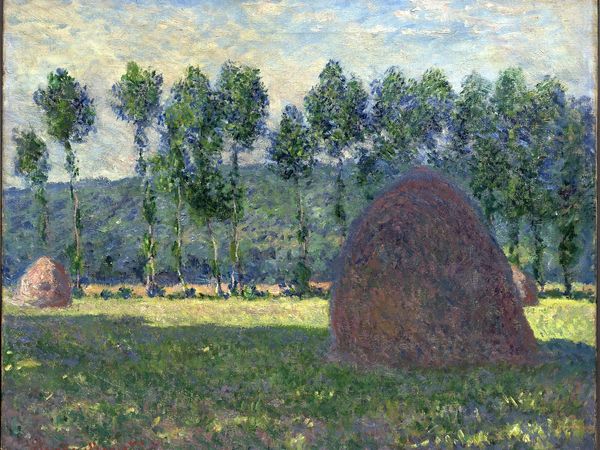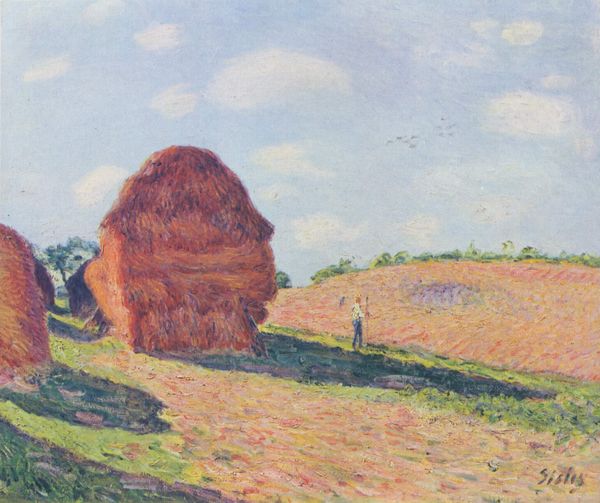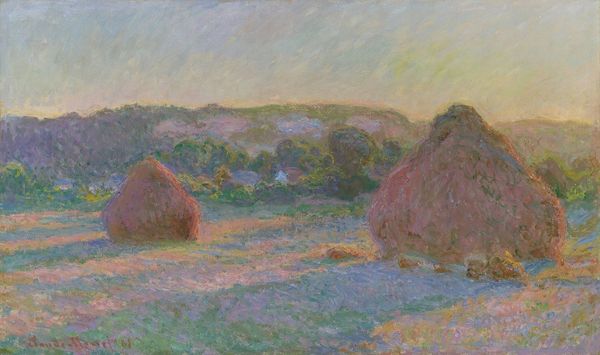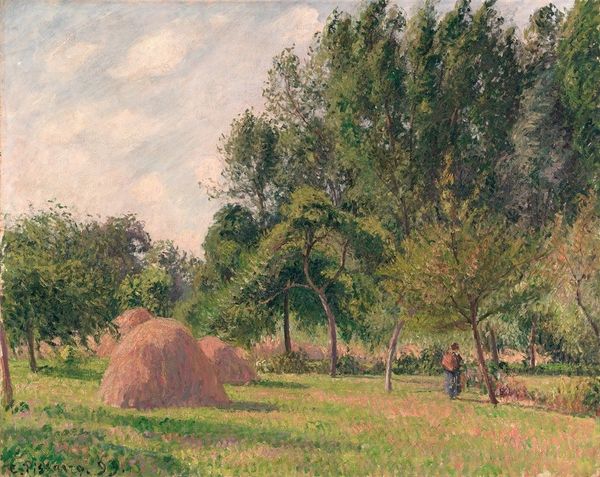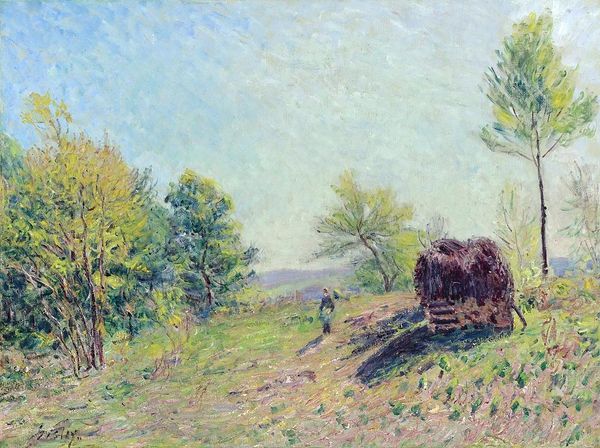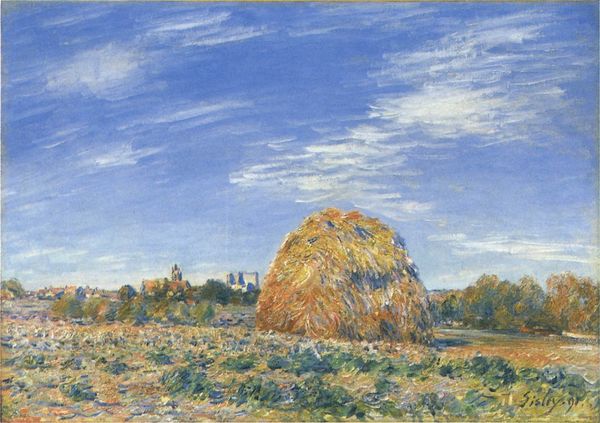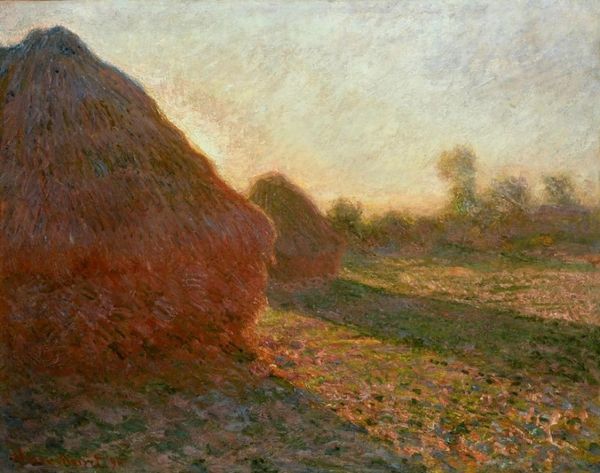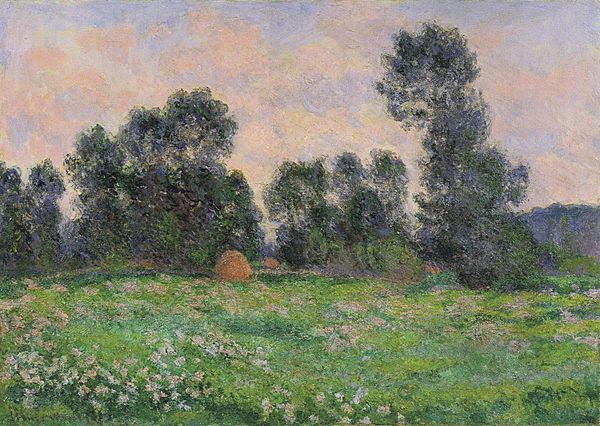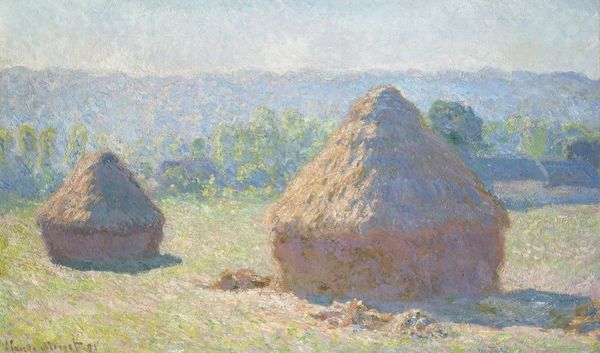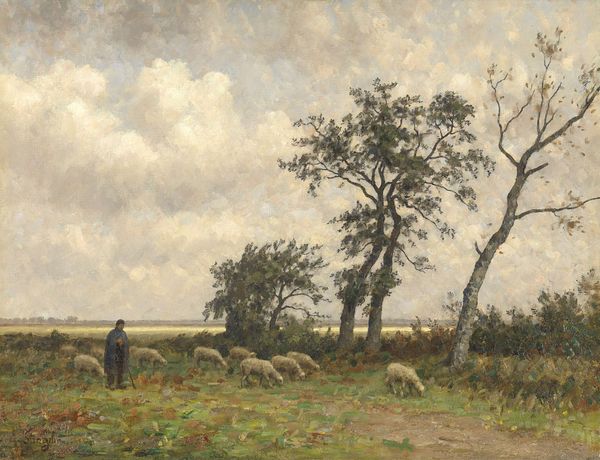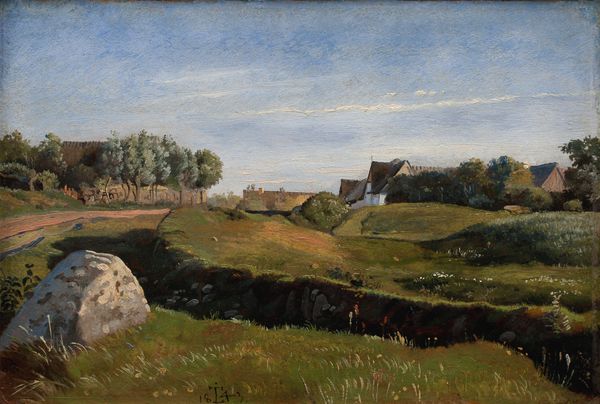
painting, plein-air, oil-paint
#
painting
#
impressionism
#
plein-air
#
oil-paint
#
landscape
#
impressionist landscape
#
oil painting
#
post-impressionism
Copyright: Public domain
Alfred Sisley created this oil painting in the 1890s, depicting haystacks in the French countryside near Moret. Sisley, along with Monet and Pissarro, broke with academic tradition by painting landscapes en plein air, capturing the fleeting effects of light and atmosphere. The subject of haystacks connects to the broader cultural context of late 19th-century France. The industrial revolution led to rapid urbanization, and artists like Sisley turned to rural landscapes. These works can be seen as a commentary on the changing social and economic structures, reflecting a nostalgic longing for a simpler, agrarian past. The Impressionists’ focus on the everyday was also a conscious effort to democratize art, portraying the lives of ordinary people and places rather than grand historical or mythological scenes. To truly understand Sisley’s work, we can look into the economic conditions of rural France, as well as the art market and its institutions. By examining such factors, we gain a richer appreciation of the painting’s role in shaping and reflecting the cultural values of its time.
Comments
No comments
Be the first to comment and join the conversation on the ultimate creative platform.
